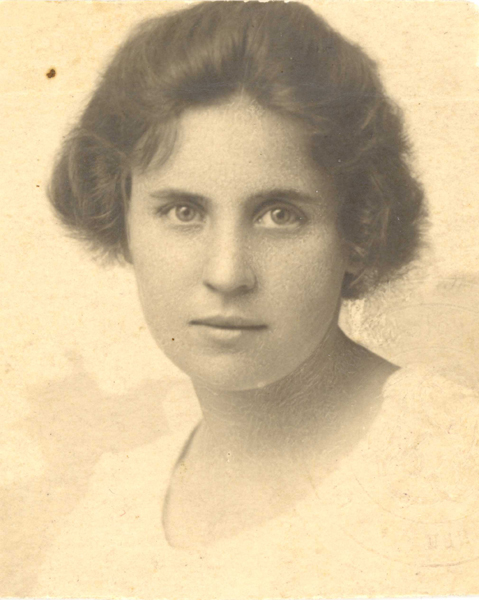Biography
Lilia’s father, Julius Sofer, was Jewish and a merchant / representative of the Waldes Koh-i-noor company, her mother Katharina née Skala was a Catholic. The daughter attended a private girls’ high school, where she passed the Matura in 1915. For her parents, studying medicine would have been the appropriate professional training. But Lilia already secretly harboured the desire to become an actress and preferred a completely different direction. She began studying architecture at the Technische Hochschule (Technical University). This was not yet possible for women in Vienna in 1915. In Dresden, she was able to live with one of her father’s business partners and begin her life as a student. In October 1915 she enrolled in the structural engineering department of the TH Dresden and studied for 10 semesters. After four semesters of study, she entered for the preliminary diploma examination. She passed the main diploma examination with distinction in August 1920 (as the 2nd student after Else Riedel and the first ‘with distinction’’. Throughout her studies she attended all lectures and consistently had good grades. In the early years there seems to have been only one other female student in the department. By 1920 there were already 10 female students. Lilia Sofer seems to have been persistent and ambitious and to have enjoyed the profession. She returned to Vienna as a graduate engineer.
First, she spent eight weeks gaining practical experience as a bricklayer’s apprentice and in a carpenter’s workshop. Starting in the fall, she attended the Kunstgewerbeschule (Arts and Crafts School) for one semester as a guest student in the architecture class taught by Oskar Strnad. As a career aspiration she stated: Interior design!
Her first commission was the renovation of a private children’s home in Laa an der Tulln, municipality of Neulengbach, which was generously financed by the composer and violin virtuoso Fritz Kreisler and his wife Harriet. She also worked for exhibitions in Vienna and Germany, had private commissions and became known for her articles and lectures in women’s clubs.
In 1922 she married and soon the first of her two sons was born. As a married woman and mother, practicing the unusual profession of architect was met with astonishment, recognition and scepticism from the public.
In Vienna, her passion for acting soon returned. Through her acquaintance with Max Reinhard, who encouraged her, she took acting lessons. From 1930 she already had engagements, she played in six Austrian and German films.
Lilia’s husband Erich Louis Polak was Jewish. In the 1930s, as the Nazi threat grew, they both decided to adopt their mother’s non-Jewish name – Skala. In 1938, after the Anschluss, the situation in Austria became too risky for Erich Skala. After being imprisoned, he managed to leave the country. Lilia also managed to escape with her children to England, where the family reunited. In 1939 they emigrated to the USA.
She had to start all over again under the name of Lilia Skala. She took on odd jobs to earn money which helped her to learn the English language quickly. Eventually she managed to gain a foothold as an actress, first on Broadway and later in film and television. She became a well-known and excellent film actress. Her most successful film was the 1963 drama Lilies of the Field. In 1964, she was nominated for both the Golden Globe and the Oscar in the category of Best Supporting Actress. Lilia Skala continued to perform on stage and make films into old age. In her last film, made in 1991, she was already 95 years old.
She has given the few memories of her time as an architect to the International Archive of Women in Architecture (IAWA) at Virgina Tech USA. Here you will find her student works and a portrait from her youth.
Works (selection)
1921-1922 remodelling of a children’s home in Laa an der Tulln, municipality of Neulengbach.
1922 at the Leipzig Autumn Fair, the ‘Verkaufsstand im Koffer’ (sales stand in a suitcase) and the ‘zerlegbarer Pavillon’ (dismountable pavilion) were on display, both novelties designed for Materia GmbH.
1924 exhibition ‘Der gedeckte Tisch’ ‘The set table’ in Vienna (with journalist Gisela Urban)
1925 Design of the section ‘Der neue Haushalt’ (The New Household) at the Hygiene Exhibition in the Vienna Messepalast.
Numerous articles in magazines and newspapers and lectures.
Sources
Nationale Lilia Sofer 13.10.1920, Kunstgewerbeschule Wien, Archiv UaK
Egon M. Salzer: Von bedeutenden Frauen, Dipl.-Ing. Lilia Polak-Sofer, in: die Frau und Mutter, 4/ 1927, p. 17
Matthias Franke: Lilia Sofer- Studentin der TH Dresden, Architektin und Schauspielerin, in: Hildgard Küllchen u.a. (Hg.): Frauen in der Wissenschaft- Frauen an der TU Dresden. Tagung aus Anlass der Zulassung von Frauen zum Studium in Dresden vor 100 Jahren, Leipzig 2010, p.135-143, 310
Ilse Korotin (Hg.) BiografiA. Lexikon österreichischer Frauen. Band 03 P-Z, Wien Köln Weimar, 2016, p. 2840-2841
https://www.geni.com/people/Lilia-Skala/6000000039040418628
http://www.herstory-sachsen.de/lilia-skala-sofer/
Photo: portrait, 1915, Lilia Sofer Skala Student Portfolio, Ms2003-015, Special Collections and University Archives,
University Libraries, Virginia Polytechnic Institute and State University.
Text: Christine Zwingl
February 2022

